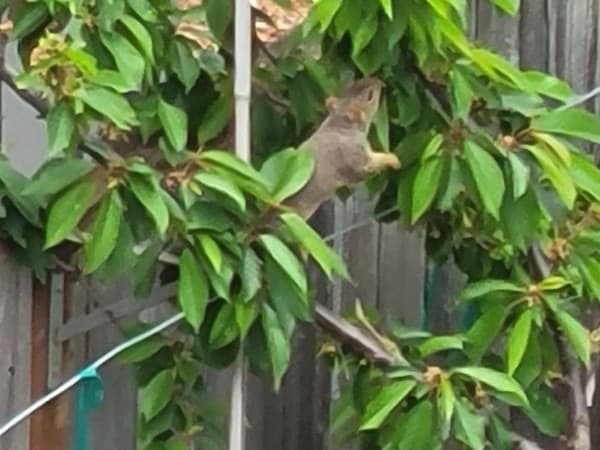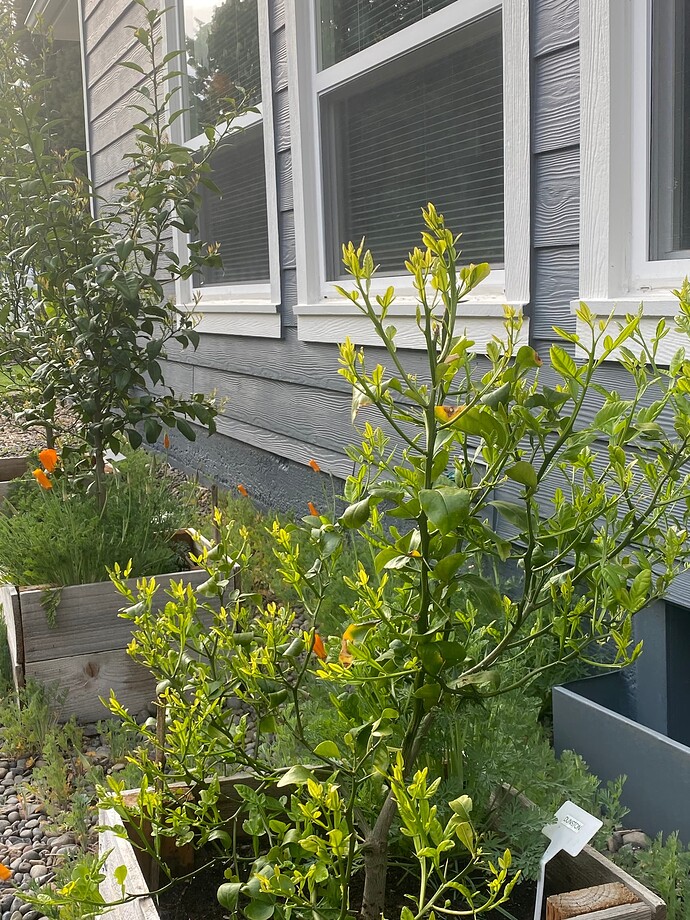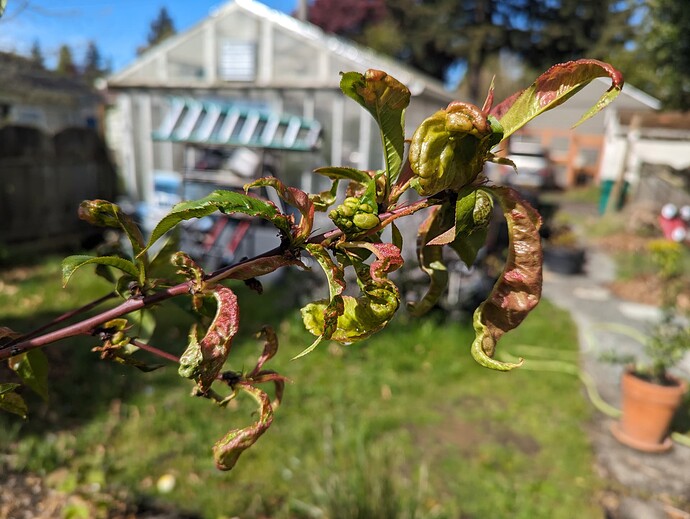Thanks, then two more years to go ![]()
Meyer Lemons get covered when below 25. They are good to 18 for short duration, but I exercise extra caution since below 25 is rare here, maybe 5 nights each winter, and it doesn’t put me out. If you are going to be below freezing for more than a few hours they need protection. In zone 8b Oregon that isn’t very often. We typically climb back to near 40 by mid morning following a freezing night. Weeks in the 30’s with snow and icy rain doesn’t phase them. We had a pattern in early March with highs around 36 and lows around 30 with ocasional snow showers, and I left all the citrus uncovered for the entire week with no damage whatsoever.
I can get you citrus trees for much cheaper than that. Send me a direct message if you are interested. We have hundreds of citrus specimens of multiple cultivars that do well in the Willamette Valley with some minor accommodations.
The only damage during the January cold snap was to the Dunstan grapefruit. I covered the trifoliata hybrids and did not apply any heating source. The Dunstan had 30% dieback, but currently it is rebounding nicely. I don’t grow it for the fruit. That’s a whatever prospect for me. I’m using it as rootstock for kinkoji.
Here it is today:
my furry friends got the jump on me this year, here’s one stripping all of the pea sized cherries off my “sweetheart” variety which was completely roped with cherries

It’s interesting that my “Oregon Curlfree” peach has pretty severe PLC this spring, and also has zero fruit set despite a pretty good number of flowers. Looks like this and has been looking worse by the day:
Meanwhile, the Indian Free graft that I added to that same tree in September (so it should have the same level of PLC risk this spring) shows only a hint of curl and it looks like at least four fruit have set on these two tiny grafts:
Someone told me OCF is same as Frost and nursery gimmick to get past Frost TM issues.
I think it depends on how many were spores got landed on Indian Free twig/branch during the previous infection.
After an unusual late Jan sunny stretch that coincided with peach buds breaking, things were looking good for avoiding serious PLC. But then we got a month of near daily rain with 50-60 temps… near perfect PLC weather.
I sprayed Ziram on my Nanaimo at bud break in mid Jan. And, then, because of the constant rain, I sprayed again mid Feb at green tip. I still got about 5% curl!
It seems if sprays miss the perfect window of bud growth, you’ll still get disease.
Is a sticker used with your sprays?
Yes, used NuFilm.
My 2 acre clearing in the woods is a fungal paradise! I see lots of scab, brown rot, rust, and anthracnose. On the positive side, the diversity of insects limits my pest pressure.
I read some really old literature where they used to build a tee-pee around the tree and fumigate to kill the pathogens. I wonder if that be done today. Although, Cornell has done some good work building a mobile UV enclosure to control grape vine diseases, thats another idea using UV.
Do you plant to let the trees figure it out or start spraying since the recommendation is to spray young resistant trees.
No spraying for me, I will graft them over with other varieties and if none of them work out without spraying then bye bye peaches.
For all my new peach/apricot/nectarine plantings I’ve switched to EMT pipe structures with covering. It limits the size of the trees but you can plant more of them- it’s an addict’s solution!
I found it’s true that some open-planted peach trees will outgrow their PLC susceptibility. My 15-year-old Salish Summer has finally gotten to the point that it does not need to be sprayed. But I’m beginning to see die-back and blind branches - probably due to less-than- ideal growing conditions and the many years of PLC infection. The whole peach-growing process for me has been a race against time.
On the other hand, I’ve had great success with covered Hardired and Harglow nectarines. This year, if things go right, I’ll also have my first crop of Harcot apricots. Granted, none are Cali quality but still…
And then there are the miniatures. Of all the peach/nectarine miniatures, Necta Zee and Nectar Babe have had the best taste for me (and others on this site). And their small size (under 5 feet) makes them easy to cover.
I think covering solves the desire to hand your kid/partner/friend a tree-ripened peach/nectarine/apricot!
I gave away my peach and nectarine trees because I hate spraying, especially in winter.
I think my curl resistant peaches and nectarines were unscathed this spring. 3 varieties, no spray.
Plum progress in PNW:
22/23 season purchased, Asian plums:
Toka: lots of blossoms
Elephant heart: lots of nice leaves; zero blossoms
Satsuma: two to three dozen blossoms
Flavor grenade pluot: one single blossom
Flavor supreme pluot: two single blossoms
Emerald beaut: loaded with blossoms; way too many to count
Euro plums purchased same time are only just leafing out, French improved that I bought a year before any of the plums has blossoms but no other euro plums do. It was in a pot until last year and suffered snow collapse and other indignities so I was pleased to see it with healthy leaves and some blossoms. It was the first euro plum to wake up.
I think PLC pressure is much higher Seattle area than ours. None of my experimental spray trees got curl, neither the ones I didn’t spray.
Would you like to trial my H2O2 + bio fungicide and help with repeatability of the protocol.
My lack of spraying is only somewhat philosophical, it’s mostly just laziness. I don’t want to add another tree/garden chore; watering and transplanting and weeding and mulching and pruning and hand pollinating and occasionally fertilizing are plenty enough for me!
Here in the Puget Sound my no spray ‘Puget Gold’ Apricot and ‘Pacific Pride’ Nectarine has been completely covered in PLC for the last 3-4 seasons now so I think it’s time to finally give up on those varieties. They were both highly recommended to me by Restoring Eden Nurseries owner, along with ‘Vivid’ Peach which expressed the same patterns and was finally culled recently as well. Hopefully the hybrid plums will have a better life around here but for now I am done trialing commercial peaches, apricots, and nectarines.
I’ve never seen or heard of an Apricot infected with PLC.Is it possible to get a photo?


